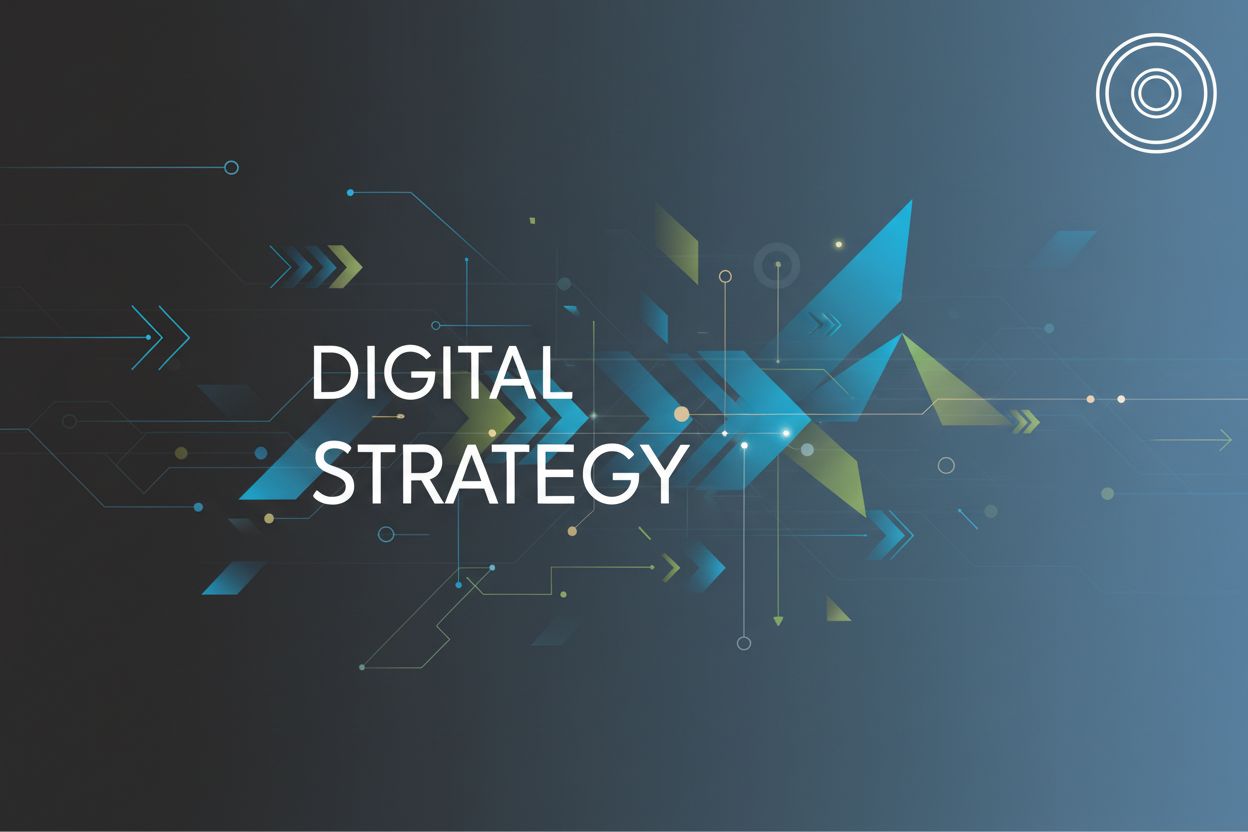Key Differences Between Programmatic and Native Advertising
TL;DR
Understanding the Basics of Digital Advertising
Okay, so digital advertising, right? It's not just slapping a banner ad on a website anymore--though, tbh, I still see plenty of those. It's way more complex, and kinda cool if you're into that sorta thing. What should you know?
- Digital ads have evolved to be more targeted and personalized. This means ads are shown to specific groups of people based on their interests, demographics, or online behavior, making them more relevant to the individual. Instead of a generic ad for everyone, you might see one tailored to your recent searches or shopping habits.
- Ad fatigue is real, so new strategies are constantly emerging to keep users engaged. Think about it, how many ads do you actually notice? When people see the same ads too often, they start to tune them out. This leads to less effective campaigns and wasted ad spend. Advertisers need to find fresh ways to capture attention.
- Understanding different ad types is key to effective marketing. From simple display banners to more integrated native formats, each has its own strengths and weaknesses. Knowing which type to use for which goal is crucial.
Defining Programmatic Advertising
Okay, so you're probably seeing ads all over the place, right? But have you ever stopped to think about how they get there... like, really think? That's where programmatic advertising comes in. It's pretty wild.
Basically, it's automated ad buying. Instead of humans manually negotiating deals, software does it all. Think of it as the robots taking over the advertising world, but in a good way, hopefully?
- Real-time bidding (rtb) is a huge part of it. AdRoll.com notes that rtb helps ensure ads are placed in relevant locations. It's like a lightning-fast auction where ad space is sold to the highest bidder, instantly, maximizing value. In this auction, advertisers (or their tech platforms like DSPs - Demand-Side Platforms) bid on ad impressions in real-time. Publishers (or their tech platforms like SSPs - Supply-Side Platforms) offer these impressions, and the highest bid wins. The bid price is often determined by how valuable the advertiser thinks that specific impression is, based on the user's data and the website's context.
- Algorithms play a big role, too. They're constantly analyzing data to figure out the best place to show an ad, optimizing for things like clicks or conversions. This data can include user demographics (age, gender, location), browsing history, interests, and even the content of the website they're currently viewing. "Optimizing" means the algorithm adjusts its strategy – perhaps by increasing bids for certain audiences or pausing ads on underperforming sites – to get the best possible results for the advertiser's goals. It's not perfect, but it's way more efficient than guessing.
So, yeah, bots buying ads.
Exploring Native Advertising
Native advertising is kinda funny, right? Like, it's an ad, but it really wants to be your friend. The main goal is to blend in, so you barely notice it's an ad which is why it can be so effective!
- Seamless integration is key. Native ads mimic the look and feel of the platform; think sponsored articles on news sites or promoted posts on social media. It's all about not being disruptive.
- User experience matters. A big part of native advertising is creating a positive user experience, which means the ad should provide value, not just hawk a product.
- Native advertising can build trust. When done right, it's less intrusive and can strengthen brand affinity, but it's a balancing act; you don't want to trick people, obviously. This "balancing act" refers to the ethical tightrope advertisers walk. While the goal is to blend in, it's crucial to be transparent. Users can react very negatively if they feel deceived. This is why clear labeling, like "Sponsored Content" or "Promoted," is essential. The pitfall is creating content that is too similar to editorial content without clear disclosure, leading to a loss of credibility and user backlash.
Okay, so you're probably wondering, like, what really sets these two apart, right? It's not just about ads appearing on the internet—we all know that. So, let's get into the nitty-gritty...
- Automation vs. Integration: Programmatic is all about speed and automation. It's like, "Hey, let's get this ad in front of as many eyeballs as possible, ASAP!" This is achieved through automated platforms and real-time bidding. Native advertising, on the other hand, is more about how the ad fits into the content. It's about making this ad feel like it belongs here, you know? The focus is on the creative and its placement within the user's natural flow of content consumption.
- Appearance is key. Programmatic ads are your standard banners and videos; native ads try to blend in, like sponsored posts on your social feed. It's kinda like a chameleon, right? Programmatic often uses traditional ad formats, while native advertising prioritizes formats that match the surrounding content.
- Goals, goals, goals: Programmatic is great for broad reach and getting your name out there. Native advertising? That's more for building trust and getting people to actually like your brand. flyingvgroup.com notes that it all depends on what you want to achieve. Programmatic excels at efficiency and scale, while native advertising aims for deeper engagement and brand affinity.
Think about it this way: a healthcare company might use programmatic ads to quickly promote flu shots across various websites. But for a deeper connection, they could partner with a health blog to create a native article on "5 Ways to Boost Your Immunity This Winter." See the difference?
When to Use Programmatic vs. Native Advertising
Okay, so you're at this point where you're wondering, "When do I use what?" I get it. It's not always obvious.
- Programmatic is your go-to for broad reach. Think of it like casting a wide net; great for getting your name out there efficiently. If you’re launching a new product and just need eyeballs, programmatic is probably what you want. It's ideal for brand awareness campaigns where reaching a large audience quickly is the priority.
- Native advertising shines when you need engagement. It's about building trust and providing value. Say you're a financial services company; a native ad could be an article on "5 Smart Ways to Save for Retirement," subtly mentioning your services. This approach is best for campaigns focused on lead generation, building brand loyalty, or educating consumers.
- Hybrid approaches? Totally a thing. You get the efficiency of programmatic with the engagement of native. For instance, a retail brand might use programmatic ads to drive traffic to a blog post (a native ad) that offers styling tips featuring their products. This strategy leverages the strengths of both to achieve a more comprehensive marketing objective.
It really depends on your goals, right?
Benefits and Challenges of Programmatic and Native Advertising
Let's break down what makes each of these approaches great, and where they can sometimes fall short.
Programmatic Advertising
Benefits:
- Efficiency and Speed: Automates the buying process, saving time and resources.
- Precise Targeting: Reaches specific audiences based on vast amounts of data.
- Scalability: Can reach millions of users across numerous websites and apps.
- Cost-Effectiveness: Optimizes ad spend by bidding only for valuable impressions.
Challenges:
- Ad Fraud: The automated nature can be exploited by fraudulent traffic.
- Brand Safety: Ads might appear on inappropriate or undesirable websites.
- Complexity: Requires specialized knowledge and technology to manage effectively.
- Potential for Ad Fatigue: If not managed well, can still lead to users ignoring ads.
Native Advertising
Benefits:
- Higher Engagement: Blends in, leading to more user interaction and less disruption.
- Improved User Experience: Ads feel more like organic content, less intrusive.
- Enhanced Brand Affinity: Builds trust and positive associations with the brand.
- Better Click-Through Rates: Users are more likely to click on content they perceive as valuable.
Challenges:
- Ethical Concerns: The line between content and advertising can blur, risking deception if not handled transparently.
- Higher Production Costs: Creating high-quality, integrated content can be more expensive.
- Limited Reach (Potentially): May not achieve the same broad reach as programmatic without significant investment.
- Platform Dependence: Effectiveness can vary greatly depending on the platform and its audience.
Measuring Success and ROI
Alright, so how do you really know if your ads are, like, working? It's not just about throwing money at the internet and hoping for the best, ya know?
- Track impressions and click-through rates (ctr)—are people seeing your ads, and are they clicking? Impressions tell you how many times your ad was displayed, indicating reach. CTR (Clicks divided by Impressions) shows how compelling your ad is to the audience it's reaching. A low CTR might mean your ad isn't relevant or appealing. If not, somethings up!
- Use analytics to measure engagement and brand lift. Are folks actually remembering your brand, and are they, like, hanging around on your site? Engagement refers to how users interact with your content, such as time spent on the site, pages viewed per session, or specific actions taken. Brand lift measures the impact of your advertising on brand perception, awareness, and purchase intent, often gauged through surveys or by observing changes in brand searches and website traffic after an ad campaign.
- Conversion Rates are crucial – are people taking the desired action (e.g., making a purchase, signing up)? Cost Per Acquisition (CPA) tells you how much it costs to get one conversion, and Return on Ad Spend (ROAS) shows you how much revenue you're generating for every dollar spent on advertising.
- Adjust strategies based on data, like, duh. If somethings not working, tweak it!
The Future of Digital Advertising
Okay, so what's next for digital advertising? It's kinda like asking what the future of breathing will be, right? It's always gonna be there, but it'll probably change in ways we can't completely predict.
- ai and machine learning (ml) are becoming essential. They're not just buzzwords; they're driving ad placement and personalization. Think about how netflix suggests shows – that's the kind of ai magic heading to your ads. This means AI can predict which users are most likely to convert, dynamically adjust ad creatives in real-time for maximum impact (dynamic creative optimization), and even help detect fraudulent activity more effectively.
- privacy regulations are shaking things up. Remember when you could just track everything? Yeah, those days are over. Now, it's about finding that balance between personalization and respecting user privacy. Regulations like the GDPR (General Data Protection Regulation) in Europe and the CCPA (California Consumer Privacy Act) have significantly impacted how advertisers collect and use data. This means a shift towards first-party data (data you collect directly from your customers), contextual targeting (showing ads based on the content of the page, not the user's history), and privacy-enhancing technologies. So, you're gonna have to be more creative with your targeting.
- expect ad formats to keep evolving. banner ads are... well, let's just say they're not the future, ya know? Interactive ads, augmented reality (ar) experiences and beyond, its all about keeping users engaged. Imagine an ad where you can virtually try on clothes using your phone's camera, or an interactive poll embedded directly into a video ad. These immersive and engaging formats are becoming more common.
Digital advertising is gonna keep evolving, but you need to stay on top of the game.




